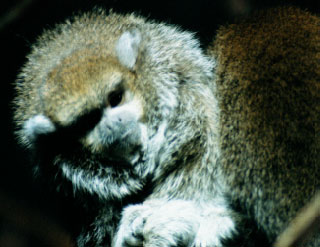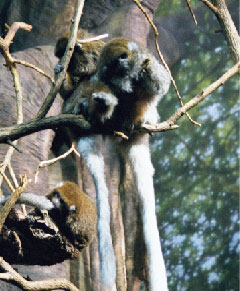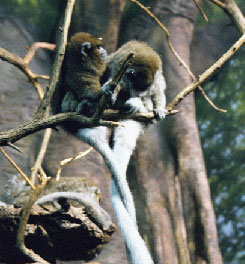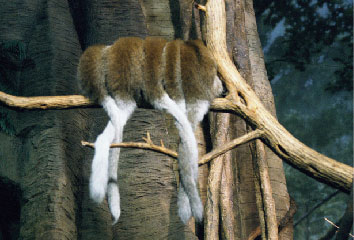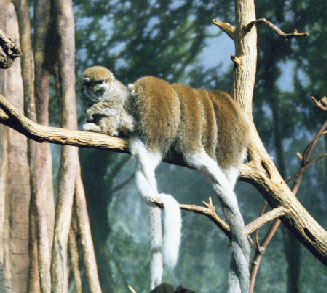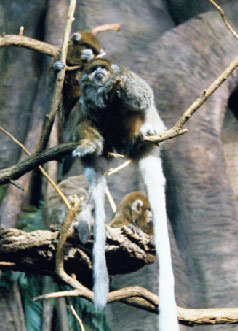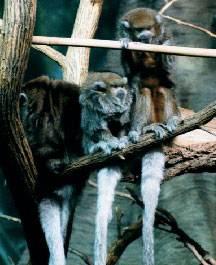The dental formula is 2:1:3:3 on both the upper and lower jaws (Ankel-Simons, 2000). The tail of the Bolivian gray titi is not prehensile. The average body mass for males of the Bolivian gray titi was found to be 991 grams and for females it was 909 grams (Smith and Jungers, 1997).
This species has two subspecies that each have a different pelage coloration:
- Callicebus donacophilus donacophilus: The upper and outer parts of the head, body, outer and inner sides of forelimbs buffy to orange agouti (Hershkovitz, 1990). The ventral side is uniformly orange or brownish orange (Hershkovitz, 1990). That tail has a coloration that is mixed blackish and buffy with the base paler (Hershkovitz, 1990). The ears are hairy and tufted white (Hershkovitz, 1990).
- Callicebus donacophilus pallescens: The upper and outer sides of the head and body and outer sides of the limbs are pale buff agouti (Hershkovitz, 1990). The pelage of this subspecies is described as being extremely long (Hershkovitz, 1990).
RANGE:
The Bolivian gray titi is found in the countries of Bolivia, Brazil and Paraguay (Rowe, 1996; Hershkovitz, 1990).
The two subspecies have different ranges:
- Callicebus donacophilus donacophilus: This subspecies is found in west-central Bolivia in the upper Rios Mamore-Grande and San Miguel basin in the provinces of Beni and Santa Cruz (Hershkovitz, 1990). This subspecies is found between 100-500 meters above sea level (Hershkovitz, 1990).
- Callicebus donacophilus pallescens: This subspecies is found west of the Rio Paraguay in the Gran Chaco of Paraguay (Hershkovitz, 1990). This subspecies is also found in the Pantanal of Mato Grosso do Sul, Brazil (Hershkovitz, 1990).
